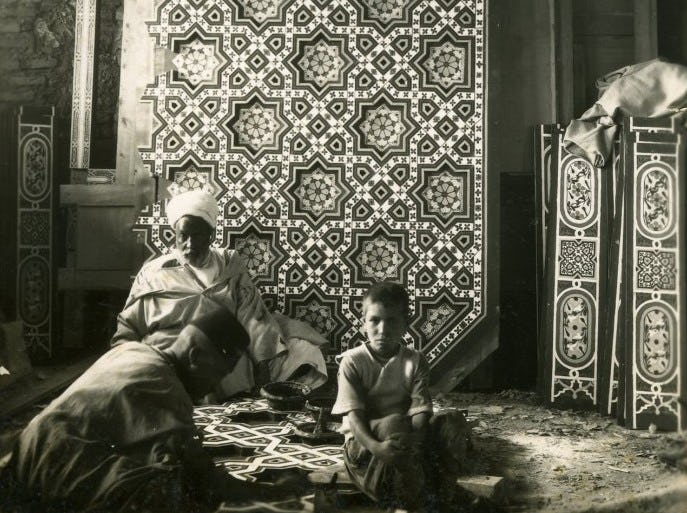Polychrome Molded Tile Panel Depicting Courtly Banquet Scene
Date19th century
PeriodQajar
MediumEarthenware, polychrome pigments
DimensionsOverall: 18 1/4 x 22 5/8 x 15 3/4 in. (46.4 x 57.5 x 40cm)
ClassificationsCeramics
Object number48.79
DescriptionCelebratory pictorial subjects like royal feasts have embellished Persian architectural structures since the pre-Islamic era of the Achaemenid Empire, and this courtly banquet scene from nineteenth-century Qajar Iran is no exception. Within this two-piece molded tile panel are six figures depicted within a pavilion backdrop of architectural columns and green and lavender hanging drapes with gold fabric draws. Ceramic dishes and pastel hued fruits are sprinkled among the feasting figures in the central image as the entire scene is framed by a lobed floral border and interlaced vine ornamental band.During the nineteenth-century as new image-making technologies and techniques came into widespread use, newer media such as photography and lithographic prints were adopted into nineteenth-century Iranian historic arts. For example, the flowering tulip border seen here around the figural ceramic scene resembles similar floral borders found across other Qajar-era portable objects, such as painted lacquer boxes and bookbindings, prints, and even postcards. New pigments and color options were also introduced into tilemakers’ color palettes, like the yellows, greens, pinks, and purples seen in the painted underglaze of this portable tile work. The individual small scale of this two-tiled panel also speaks to developing nineteenth-century tastes in both Iran and Europe for collectable objects that could be brought home as a souvenir and hung on the wall. Despite the changing materials, techniques, designs, and consumers for Persian ceramic tile works, the incorporation of new imagery and colors into this centuries-old historic tradition demonstrates the medium’s versatility and durable nature.
On View
On viewCollections
18th - 19th century
18th - 19th century
19th century
17th century
17th century
1520














